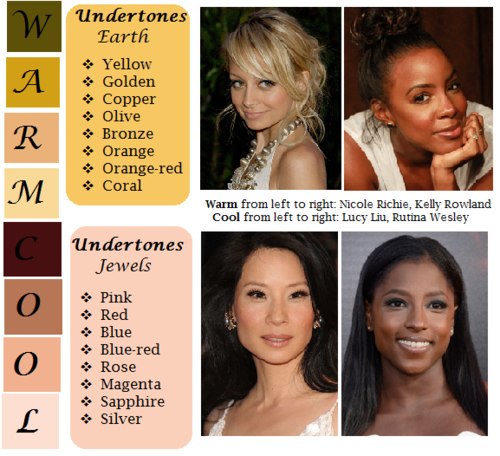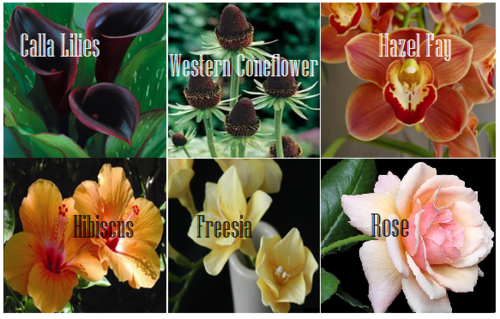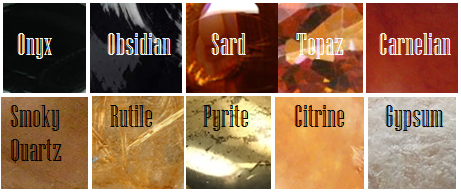Finally Got Animal Crossing: New Leaf. Brewster Is Still My Fav. :)

Finally got Animal Crossing: New Leaf. Brewster is still my fav. :)
More Posts from Quantumjames and Others
I have no words except... yes. Just, so much yes.
TPoH: Update!

Available here on the TPoH website or here on smackjeeves!
WIP of German, Russian, Chinese, Dutch, Polish, Esperanto, Swedish, Latin, Hungarian, Norwegian, French, Spanish and Japanese translations!
If you’re enjoying the comic or any of the other stories I’ve been making please consider supporting me on Patreon or have a look if there’s anything that tickles your fancy in my Society6 merch box :D
BEHOLD

MY NEW SON.
HIS NAME IS LONG LUSCIOUS LEGS
hey full offense but the ‘use the right pronouns even if the person is horrible!’ statements arent made to coddle horrible ppl, its saying ‘dont view correct pronouns as a fucking privilege that can be taken away once people decide you’ve fucked up enough’, misgendering someone on purpose is transphobic no matter what bc it equates transphobia as a ‘punishment’ for bad people, pronouns are a part of baseline human respect, its that simple
Words for Skin Tone | How to Describe Skin Color

We discussed the issues describing People of Color by means of food in Part I of this guide, which brought rise to even more questions, mostly along the lines of “So, if food’s not an option, what can I use?” Well, I was just getting to that!
This final portion focuses on describing skin tone, with photo and passage examples provided throughout. I hope to cover everything from the use of straight-forward description to the more creatively-inclined, keeping in mind the questions we’ve received on this topic.
Standard Description
Basic Colors

Pictured above: Black, Brown, Beige, White, Pink.
“She had brown skin.”
This is a perfectly fine description that, while not providing the most detail, works well and will never become cliché.
Describing characters’ skin as simply brown or beige works on its own, though it’s not particularly telling just from the range in brown alone.
Complex Colors
These are more rarely used words that actually “mean” their color. Some of these have multiple meanings, so you’ll want to look into those to determine what other associations a word might have.

Pictured above: Umber, Sepia, Ochre, Russet, Terra-cotta, Gold, Tawny, Taupe, Khaki, Fawn.
Complex colors work well alone, though often pair well with a basic color in regards to narrowing down shade/tone.
For example: Golden brown, russet brown, tawny beige…
As some of these are on the “rare” side, sliding in a definition of the word within the sentence itself may help readers who are unfamiliar with the term visualize the color without seeking a dictionary.
“He was tall and slim, his skin a russet, reddish-brown.”
Comparisons to familiar colors or visuals are also helpful:
“His skin was an ochre color, much like the mellow-brown light that bathed the forest.”
Modifiers
Modifiers, often adjectives, make partial changes to a word.The following words are descriptors in reference to skin tone.
Dark - Deep - Rich - Cool
Warm - Medium - Tan
Fair - Light - Pale
Rich Black, Dark brown, Warm beige, Pale pink…
If you’re looking to get more specific than “brown,” modifiers narrow down shade further.
Keep in mind that these modifiers are not exactly colors.
As an already brown-skinned person, I get tan from a lot of sun and resultingly become a darker, deeper brown. I turn a pale, more yellow-brown in the winter.
While best used in combination with a color, I suppose words like “tan” “fair” and “light” do work alone; just note that tan is less likely to be taken for “naturally tan” and much more likely a tanned White person.
Calling someone “dark” as description on its own is offensive to some and also ambiguous. (See: Describing Skin as Dark)
Undertones
Undertones are the colors beneath the skin, seeing as skin isn’t just one even color but has more subdued tones within the dominating palette.

pictured above: warm / earth undertones: yellow, golden, copper, olive, bronze, orange, orange-red, coral | cool / jewel undertones: pink, red, blue, blue-red, rose, magenta, sapphire, silver.
Mentioning the undertones within a character’s skin is an even more precise way to denote skin tone.
As shown, there’s a difference between say, brown skin with warm orange-red undertones (Kelly Rowland) and brown skin with cool, jewel undertones (Rutina Wesley).
“A dazzling smile revealed the bronze glow at her cheeks.”
“He always looked as if he’d ran a mile, a constant tinge of pink under his tawny skin.”
Standard Description Passage
“Farah’s skin, always fawn, had burned and freckled under the summer’s sun. Even at the cusp of autumn, an uneven tan clung to her skin like burrs. So unlike the smooth, red-brown ochre of her mother, which the sun had richened to a blessing.”
-From my story “Where Summer Ends” featured in Strange Little Girls
Here the state of skin also gives insight on character.
Note my use of “fawn” in regards to multiple meaning and association. While fawn is a color, it’s also a small, timid deer, which describes this very traumatized character of mine perfectly.
Though I use standard descriptions of skin tone more in my writing, at the same time I’m no stranger to creative descriptions, and do enjoy the occasional artsy detail of a character.
Creative Description
Whether compared to night-cast rivers or day’s first light…I actually enjoy seeing Characters of Colors dressed in artful detail.
I’ve read loads of descriptions in my day of white characters and their “smooth rose-tinged ivory skin”, while the PoC, if there, are reduced to something from a candy bowl or a Starbucks drink, so to actually read of PoC described in lavish detail can be somewhat of a treat.
Still, be mindful when you get creative with your character descriptions. Too many frills can become purple-prose-like, so do what feels right for your writing when and where. Not every character or scene warrants a creative description, either. Especially if they’re not even a secondary character.
Using a combination of color descriptions from standard to creative is probably a better method than straight creative. But again, do what’s good for your tale.
Natural Settings - Sky

Pictured above: Harvest Moon -Twilight, Fall/Autumn Leaves, Clay, Desert/Sahara, Sunlight - Sunrise - Sunset - Afterglow - Dawn- Day- Daybreak, Field - Prairie - Wheat, Mountain/Cliff, Beach/Sand/Straw/Hay.
Now before you run off to compare your heroine’s skin to the harvest moon or a cliff side, think about the associations to your words.
When I think cliff, I think of jagged, perilous, rough. I hear sand and picture grainy, yet smooth. Calm. mellow.
So consider your character and what you see fit to compare them to.
Also consider whose perspective you’re describing them from. Someone describing a person they revere or admire may have a more pleasant, loftier description than someone who can’t stand the person.
“Her face was like the fire-gold glow of dawn, lifting my gaze, drawing me in.”
“She had a sandy complexion, smooth and tawny.”
Even creative descriptions tend to draw help from your standard words.
Flowers

Pictured above: Calla lilies, Western Coneflower, Hazel Fay, Hibiscus, Freesia, Rose
It was a bit difficult to find flowers to my liking that didn’t have a 20 character name or wasn’t called something like “chocolate silk” so these are the finalists.
You’ll definitely want to avoid purple-prose here.
Also be aware of flowers that most might’ve never heard of. Roses are easy, as most know the look and coloring(s) of this plant. But Western coneflowers? Calla lilies? Maybe not so much.
“He entered the cottage in a huff, cheeks a blushing brown like the flowers Nana planted right under my window. Hazel Fay she called them, was it?”
Assorted Plants & Nature

Pictured above: Cattails, Seashell, Driftwood, Pinecone, Acorn, Amber
These ones are kinda odd. Perhaps because I’ve never seen these in comparison to skin tone, With the exception of amber.
At least they’re common enough that most may have an idea what you’re talking about at the mention of “pinecone.“
I suggest reading out your sentences aloud to get a better feel of how it’ll sounds.
"Auburn hair swept past pointed ears, set around a face like an acorn both in shape and shade.”
I pictured some tree-dwelling being or person from a fantasy world in this example, which makes the comparison more appropriate.
I don’t suggest using a comparison just “cuz you can” but actually being thoughtful about what you’re comparing your character to and how it applies to your character and/or setting.
Wood

Pictured above: Mahogany, Walnut, Chestnut, Golden Oak, Ash
Wood can be an iffy description for skin tone. Not only due to several of them having “foody” terminology within their names, but again, associations.
Some people would prefer not to compare/be compared to wood at all, so get opinions, try it aloud, and make sure it’s appropriate to the character if you do use it.
“The old warlock’s skin was a deep shade of mahogany, his stare serious and firm as it held mine.”
Metals

Pictured above: Platinum, Copper, Brass, Gold, Bronze
Copper skin, brass-colored skin, golden skin…
I’ve even heard variations of these used before by comparison to an object of the same properties/coloring, such as penny for copper.
These also work well with modifiers.
“The dress of fine white silks popped against the deep bronze of her skin.”
Gemstones - Minerals

Pictured above: Onyx, Obsidian, Sard, Topaz, Carnelian, Smoky Quartz, Rutile, Pyrite, Citrine, Gypsum
These are trickier to use. As with some complex colors, the writer will have to get us to understand what most of these look like.
If you use these, or any more rare description, consider if it actually “fits” the book or scene.
Even if you’re able to get us to picture what “rutile” looks like, why are you using this description as opposed to something else? Have that answer for yourself.
“His skin reminded her of the topaz ring her father wore at his finger, a gleaming stone of brown, mellow facades.”
Physical Description
Physical character description can be more than skin tone.
Show us hair, eyes, noses, mouth, hands…body posture, body shape, skin texture… though not necessarily all of those nor at once.
Describing features also helps indicate race, especially if your character has some traits common within the race they are, such as afro hair to a Black character.
How comprehensive you decide to get is up to you. I wouldn’t overdo it and get specific to every mole and birthmark. Noting defining characteristics is good, though, like slightly spaced front teeth, curls that stay flopping in their face, hands freckled with sunspots…
General Tips
Indicate Race Early: I suggest indicators of race be made at the earliest convenience within the writing, with more hints threaded throughout here and there.
Get Creative On Your Own: Obviously, I couldn’t cover every proper color or comparison in which has been “approved” to use for your characters’ skin color, so it’s up to you to use discretion when seeking other ways and shades to describe skin tone.
Skin Color May Not Be Enough: Describing skin tone isn’t always enough to indicate someone’s ethnicity. As timeless cases with readers equating brown to “dark white” or something, more indicators of race may be needed.
Describe White characters and PoC Alike: You should describe the race and/or skin tone of your white characters just as you do your Characters of Color. If you don’t, you risk implying that White is the default human being and PoC are the “Other”).
PSA: Don’t use “Colored.” Based on some asks we’ve received using this word, I’d like to say that unless you or your character is a racist grandmama from the 1960s, do not call People of Color “colored” please.
Not Sure Where to Start? You really can’t go wrong using basic colors for your skin descriptions. It’s actually what many people prefer and works best for most writing. Personally, I tend to describe my characters using a combo of basic colors + modifiers, with mentions of undertones at times. I do like to veer into more creative descriptions on occasion.
Want some alternatives to “skin” or “skin color”? Try: Appearance, blend, blush, cast, coloring, complexion, flush, glow, hue, overtone, palette, pigmentation, rinse, shade, sheen, spectrum, tinge, tint, tone, undertone, value, wash.
Skin Tone Resources
List of Color Names
The Color Thesaurus
Skin Undertone & Color Matching
Tips and Words on Describing Skin
Photos: Undertones Described (Modifiers included)
Online Thesaurus (try colors, such as “red” & “brown”)
Don’t Call me Pastries: Creative Skin Tones w/ pics I
Writing & Description Guides
WWC Featured Description Posts
WWC Guide: Words to Describe Hair
Writing with Color: Description & Skin Color Tags
7 Offensive Mistakes Well-intentioned Writers Make
I tried to be as comprehensive as possible with this guide, but if you have a question regarding describing skin color that hasn’t been answered within part I or II of this guide, or have more questions after reading this post, feel free to ask!
~ Mod Colette
FURBY HAIR DYEING TUTORIAL
FURBY FUR DYEING TUTORIAL:
Hi everyone! Welcome to my Furby Tutorial! In this specific tutorial we will be dyeing the hair on the Furby’s head and tail (this can also work for maned Furbys). EDIT: THIS TUTORIAL ALSO WORKS ON BODY FUR!!!! Please read the entire tutorial before dyeing your Furby with this method! Thank you!
BACKGROUND KNOWLEDGE THAT CAN HELP YOU: Furbys have synthetic fur. Synthetic = PLASTIC. As you all know, most commercial dyes won’t work on a Furby very well. That is why we are going to use ACRYLIC PAINT to color our Furby! Keep reading!(also plz be aware that Nomi’s hair was dyed prior to this tutorial)

MATERIALS YOU WILL NEED: 1.) A glass of water 2.) A small vessel to mix your paint wash in 3.) Acrylic paint color of your choice (we are using metallic green for Nomi) 4.) A paintbrush (any medium sized flat or round brush will do) 5.) A toothbrush (CLEAN, preferably a clean used toothbrush) 6.) A Furby (thank you Nomi, for being our model and willing participant!) 7.) Paper towels (not pictured but you will need them.) 8.) Hair Dryer (optional but it can be very helpful; also not pictured)

Step One: Wash your hands! This is a great way to start a new art project!

Step Two: Create your wash/“dye”: this part looks daunting but is actually QUITE easy! We are going to make what’s called a “paint wash”- some of you artists may already be familiar with what this is! It’s basically thinned-out paint. What you do is put a tiny bit of paint into your empty vessel (I used about the size of a dime) and add water to it until it becomes a mixture that I slightly more WATER than paint. For me, that was about a dime-sized paint blob with about 3-4 tablespoons of water. You want it to be RUNNY, not thick.


Step Three: Once you have made your wash, it’s time to get that “dye” on your Furb! Take your toothbrush and dampen it with the wash. Tap your wash-soaked toothbrush out on a paper towel to remove excess wash. This step is important because you want your toothbrush WET with paint but not SOAKING wet. It’s best to start out first with a tiny dab of wash to play around with and then work your way up to a more saturated toothbrush.


Step Four: comb your wash through your Furby’s hair. It’s best to have your Furby ready to receive the wash, which means you should part the hair you wish to dye AWAY from the fur you do not wish to dye, so that there is minimal pigment transfer to the fur you do not wish to dye. (Tl;dr-part ya Furby’s hair, y’all)

NOTE: See this hair clumping here? I did this on purpose to show what can happen when you have TOO MUCH wash on your toothbrush. You don’t want this because it can take longer to dry and give your Furby’s hair a matted look. (I mean, if you like this look by all means, go for it! It’s your Furby, my dudes!) If this happens and you don’t like it, just blot with a paper towel, tap off your toothbrush a bit, and continue combing the wash through the hair again!


Step Five: YOUR ROOTS ARE SHOWING?!

This is any easy way to cover roots! Just take your paintbrush and load it with a TINY bit of wash, then dab the wash into the hair roots and continue to comb through with the toothbrush! Ta-daaah!


NOTE: Keep a paper towel nearby cause YOUR HANDS GONNA GET PAINT ON ‘EM.

Step Six: Continue adding the wash into the hair and combing it through until you like what you see!

Step Seven (optional): Use a hair dryer to dry your Furby’s hair!

This is for peeps who don’t want to wait for the hair to fully dry before they handle their newly-dyed Furb! I also believe that this can help seal the pigment in better, as it’s actually melting the pigment of the paint into the shaft of the synthetic hairs. If you don’t want to use this method, simply put your Furby in a place where they will be undisturbed until they are dry! (Please allow at least ONE HOUR for your Furby to air-dry if you don’t use a hair dryer). While you dry, continue to brush the hair with the toothbrush to get rid of any remaining clumps!
FINAL STEP: admire your work! Well done!!

I hope this helps you guys! You can also use washes to dye eyelashes!!! I’ll be making a tutorial on how I do mine next! Thank you for your time!
I made a fish man.


Well, partially. I had a Monster High body that was missing limbs and frankinsteined him some replacements. Plus a few extra fins and a tail. He can't really stand on his fin leg (though I did make the fin articulated), so I made him a simple crutch. I've been watching art doll videos recently (of the stuffed and wire-articulated variety) and got inspired.
I still need to paint some details to make everything more cohesive and repaint the head. All the translucent additions glow in the dark, so I really want that to come through in his eyes. To cover his head to neck transition, I'll probably use some painted fabric.
The fin for his left leg is somewhere, I just forgot to attach it before I took the pictures.
Like I needed another reason to get one of these. <3





ooak neon pink clear mini-machina + lagoon skull face



when you were built from a lie, and nothing you do can change their ending, what use does an android have for love?
[Kingdom Hearts x Drakengard + Nier: Automata]
Hi, I know you can’t share the letters for ethical reasons, but could you share some tips on how to write effective fuck you letters? It sounds like a useful skill to have.
Oh absolutely. So a fuck you letter should always be in response to an inciting action from another party. We don’t write “fuck you” letters unprompted, we write them to illicit a specific “oh shit, I’ve fucked up” reaction from the recipient. Furthermore, the inciting action on the part of the other party ideally has to be wrong. Now, when I say wrong, I really mean two things: 1) that it would incense a reasonable person, and 2) that it’s the type of action that people can get in trouble for.
So, I’m going to make a example up to demonstrate. This example has literally nothing to do with the type of letters I write, but I think it illustrates my process. Say you live in a neighborhood that has a Homeowner’s Association, but your house was built prior to the HOA forming and no owner of the house, including you, has ever agreed to join. You hung up a Pride flag on your porch last June, which is unremarkable, as many houses have flags displayed on their front porch; some are purely decorative, others convey meanings, like your neighbor’s Blue Lives Matter flag, or your other neighbor’s Build the Wall flag. The day after hanging the flag, you go on vacation for a week. When you return, you find that your Pride flag is missing, and you also find a letter in the mail from the HOA stating that you have 24 hours to remove the flag or it will be removed and you will be billed for the cost of its removal. You have, furthermore, recieved a bill for 200 dollars for the expenses incurred by the HOA in removing your flag.
Okay, so we obviously have our wrong act. So now we’re onto Stage Two, and this is the most important stage, Fact Gathering and Research. The obvious move is to find proof that the HOA had no right to enter your land or remove your property, and naturally we’ll do that as the very first thing, but really, is that going to make them sweat? We want them to sweat. So, let’s find news articles about other times this HOA or other HOAs in this neighborhood have entered someone’s property and removed or materially altered the property. Let’s find out what happened to them - were they sued? How much did they get hit for? Was there a ton of negative publicity? How did that impact housing prices?
Even though you’re not a member of the HOW, can you get a copy of the bylaws and see what they say about decorations outside homes that are part of the HOA? Is there a rule against displaying all flags? How about the neighbors? Have any of them recieved demands to take their flags down?
How about researching the demographics of the neighborhood? Do any gay couples live there? Have any gay couples applied and been denied housing there? Does the jurisdiction you live in have a law against discriminating against housing applicants due to sexual orientation? Has anyone ever complained that the HOA has acted in a discriminatory fashion against them because they’re gay? What penalties are available in your jurisdiction if that were the case? Are any of those complaints still pending, and could the complainants use the HOA’s act of removing your flag as proof of discriminatory intent?
What about the bill for $200? How was it calculated? Was it based on the time it took to remove the flag? Did it actually take that amount of time? Do you or your neighbors have a video doorbell that might have captured the removal of the flag? Who actually removed the flag? Did they say anything while removing it that might bolster your argument that the HOA acted with the intent to discriminate against gay people?
How about your own property? Did anything get damaged in the course of the flag’s removal? How much was the flag worth? How much was the property damage worth? Have you spent money related to this incident?
Once you’re done with your fact gathering and research, you’re onto stage 3, which is organizing the letter. So, you line up everything you’ve figured out, and arrange it from “least scary to the HOA” to “pants shittingly terrifying for the HOA.” Let’s say here, least scary is probaby “the cost to replace your flag” and most scary is “the prospect of a ton of lawsuits from other people who have been discriminated against and the prospect of publicity that will cause every HOA associated home’s property value to tank,” with a bunch of other stuff in the middle. Start with establishing that you’re not subject to HOA rules, and then walk them, sentence by sentence, step by step, through just how badly they’ve fucked up, and the bad outcomes they can expect in response to their fuck up.
Finish by telling them who else you’re copying on the letter, if it makes strategic sense to do so and will result in a better outcome for everyone that’s been wronged. In this case, you might think about a variety of gay friendly organizations, local news media, and governmental representatives. Wrap it up by asking them to provide you with a list of the actions that they intend to take to repair the damage that they’ve done to you and to the community within, say, fourteen days, so that you can give that to your attorney in order to help you consider how best to respond to their actions.
End with the most brutally infuriating sentence known to man: “Thank you for your kind attention to this issue.”
You’ll sleep like a baby once that letter’s in the mail.
They won’t.
-
 jackerblitz liked this · 6 years ago
jackerblitz liked this · 6 years ago -
 strawberrrylips liked this · 10 years ago
strawberrrylips liked this · 10 years ago -
 quantumjames reblogged this · 10 years ago
quantumjames reblogged this · 10 years ago

